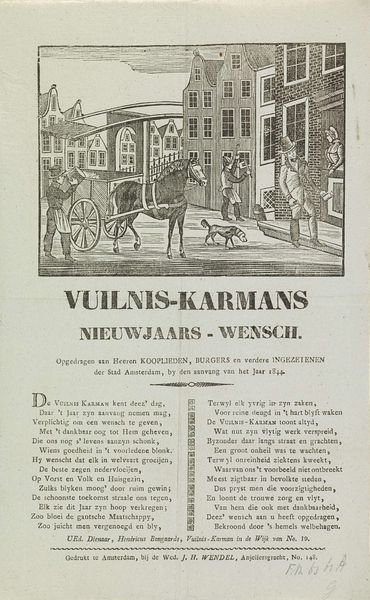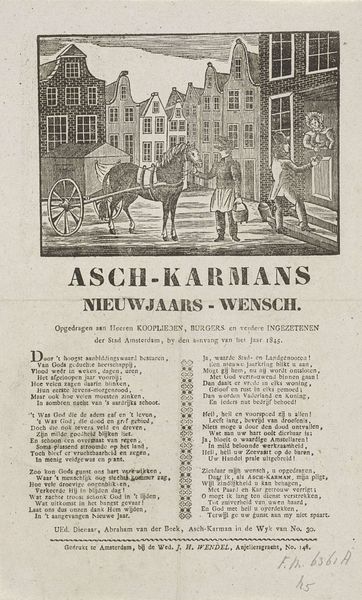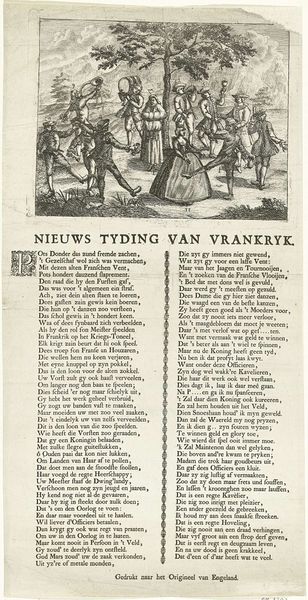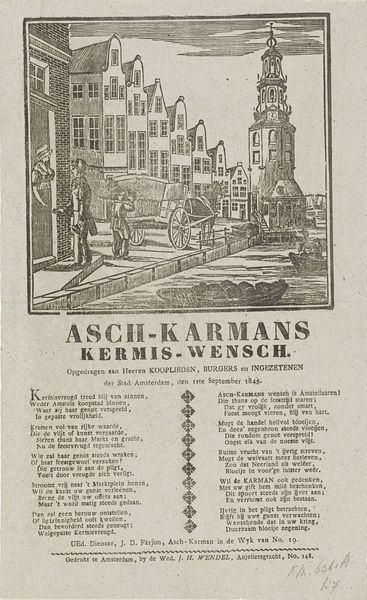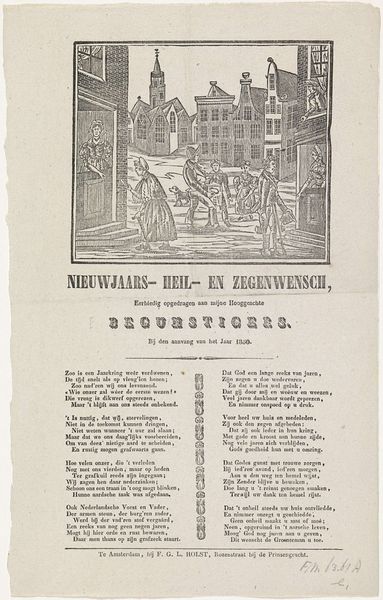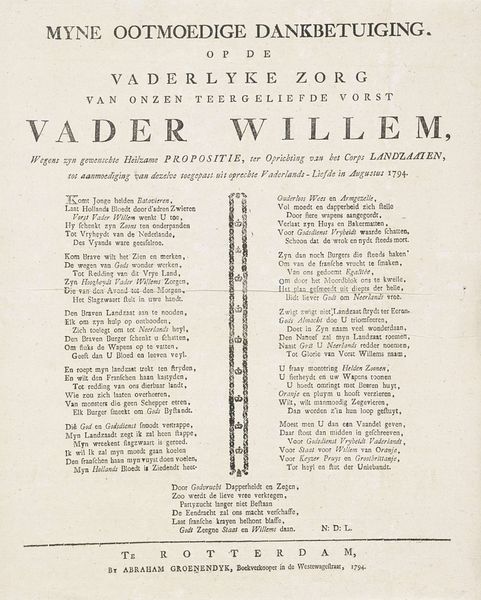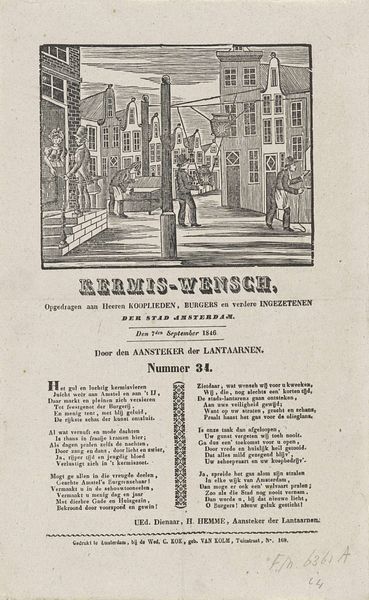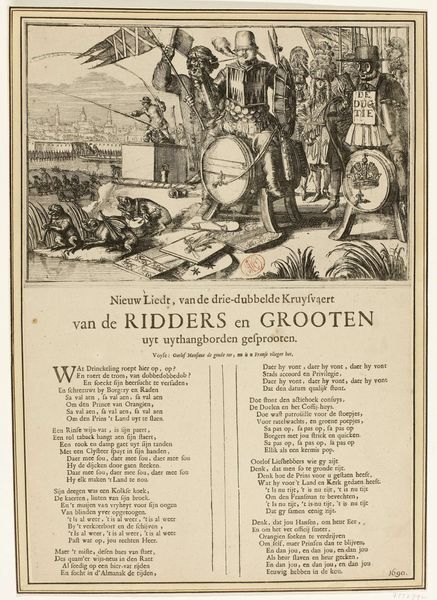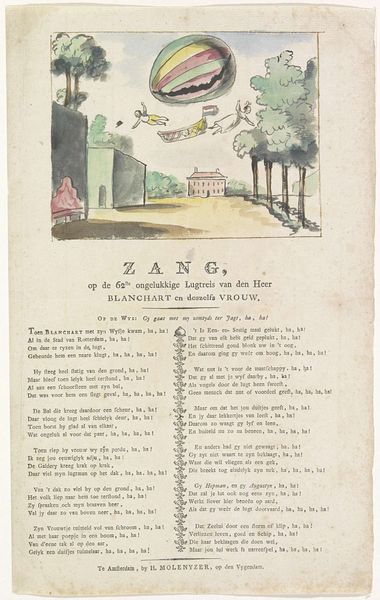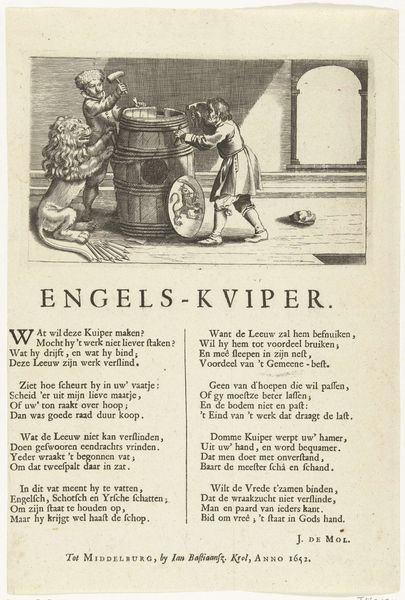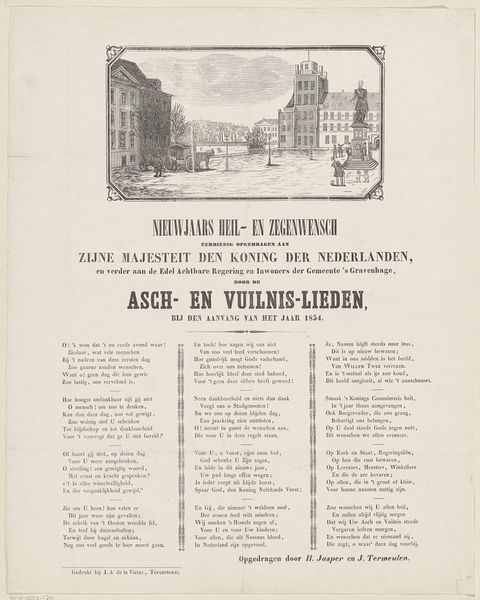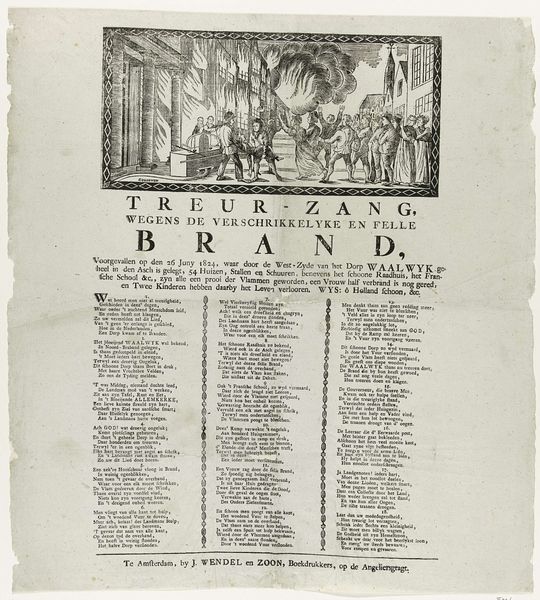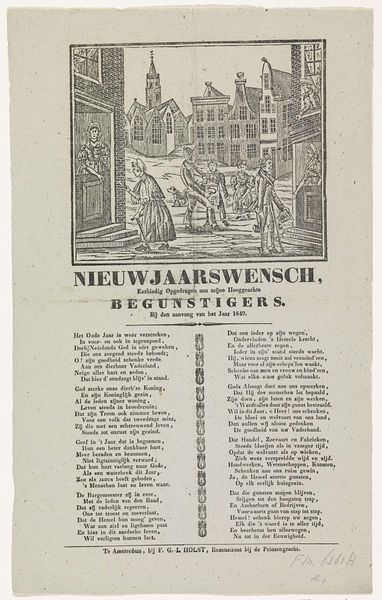
Nieuwjaarswens van de vuilnismannen van Amsterdam voor het jaar 1845 1844 - 1845
0:00
0:00
print, engraving
#
dutch-golden-age
# print
#
cityscape
#
genre-painting
#
street
#
engraving
Dimensions: height 341 mm, width 215 mm
Copyright: Rijks Museum: Open Domain
This New Year's card from 1845, printed in Amsterdam, depicts the city's sanitation workers. Beyond the humble scene, we find symbols deeply rooted in cultural memory. Note the dog trotting alongside the refuse cart; it is a motif echoing through centuries. In classical antiquity, dogs were symbols of loyalty, guardianship, and even the underworld. This duality is key: the dog is a protector, yet also a scavenger amidst decay. Consider how this symbol has evolved. In medieval art, dogs often symbolized fidelity, appearing at the feet of noblewomen in portraits. Yet, in other contexts, dogs could represent base instincts or the wild, untamed aspects of human nature. The presence of a dog here, in a scene of urban labor, subtly acknowledges the complex relationship between civilization and its underbelly. It reminds us that even in the most orderly societies, primal forces remain close to the surface. This image resonates because it touches upon our collective, often subconscious, awareness of these enduring themes. The dog, in its humble persistence, engages us on a deeper, psychological level.
Comments
No comments
Be the first to comment and join the conversation on the ultimate creative platform.
